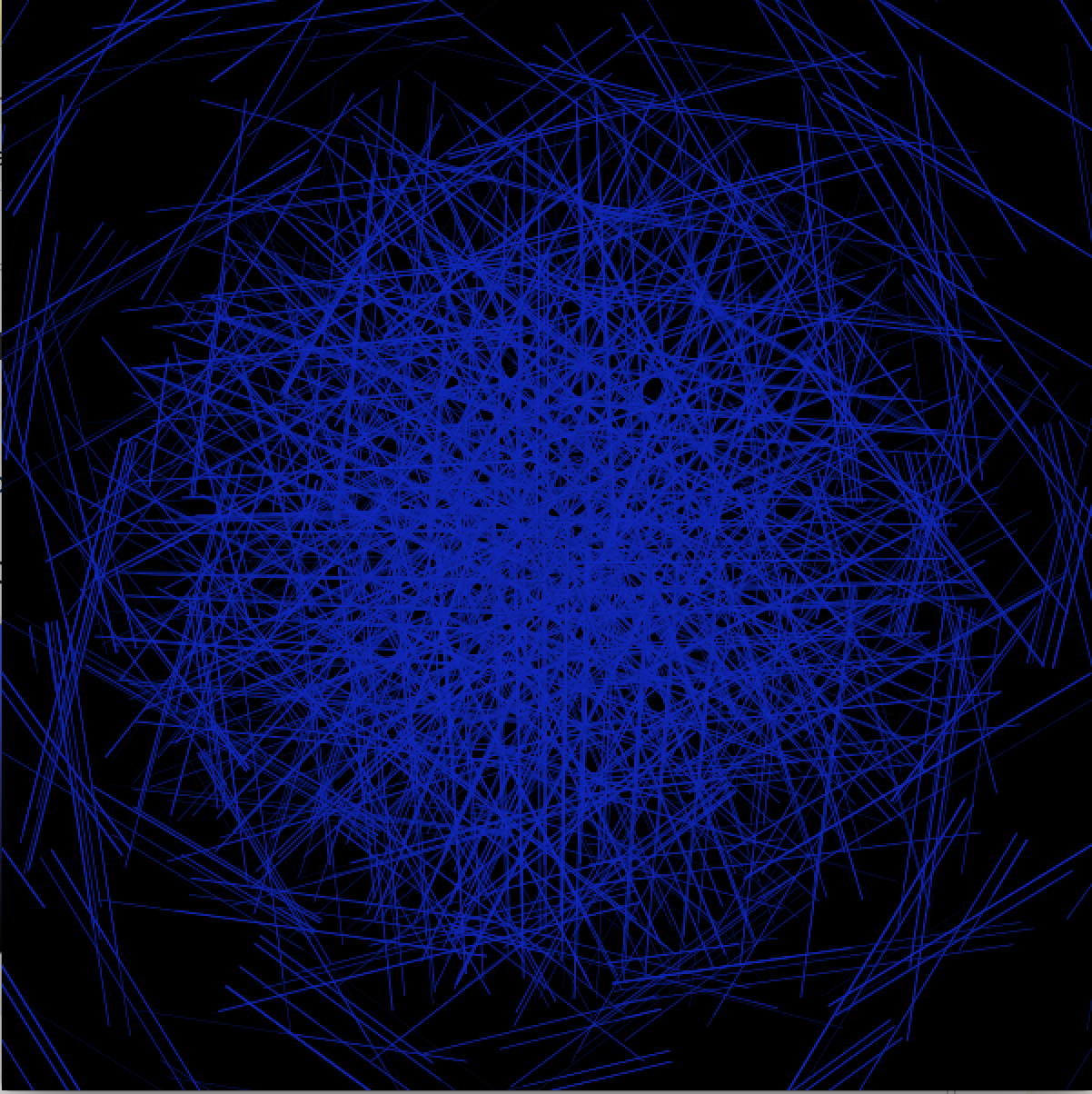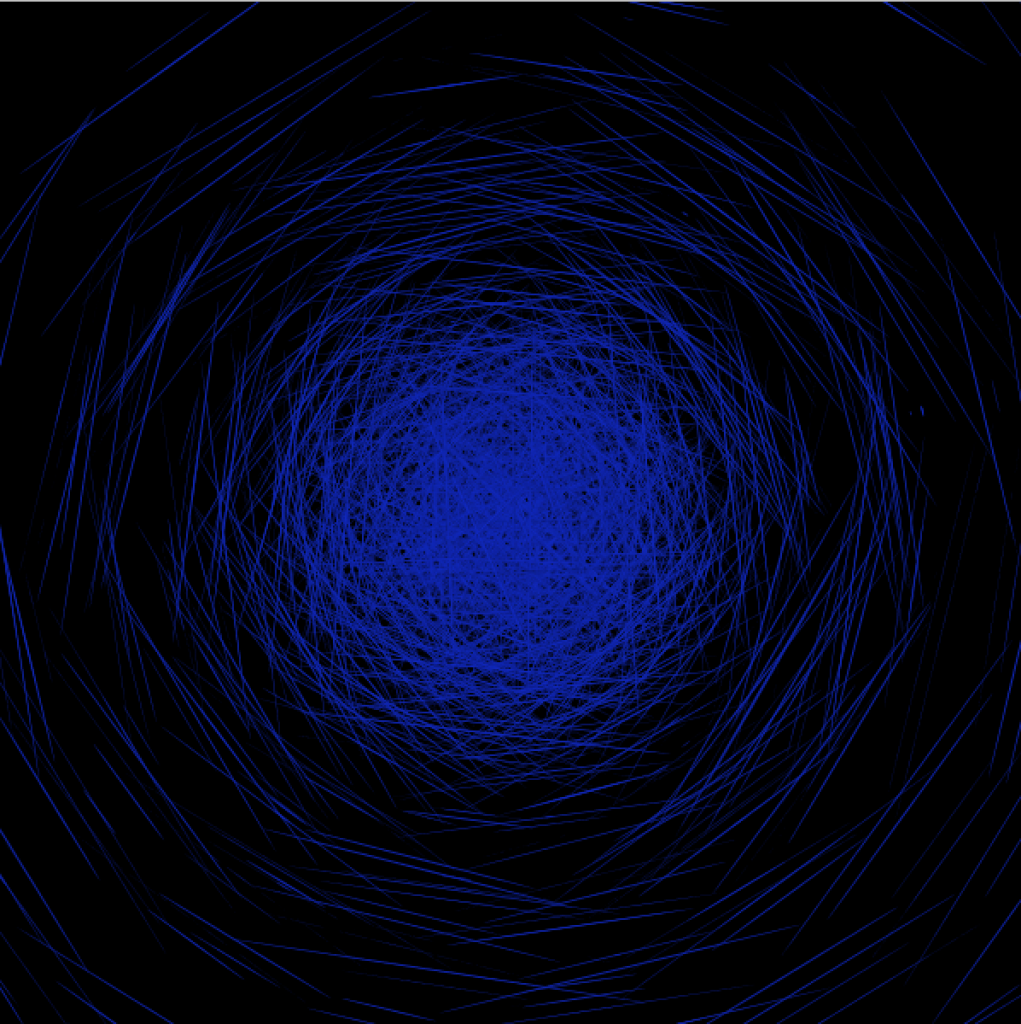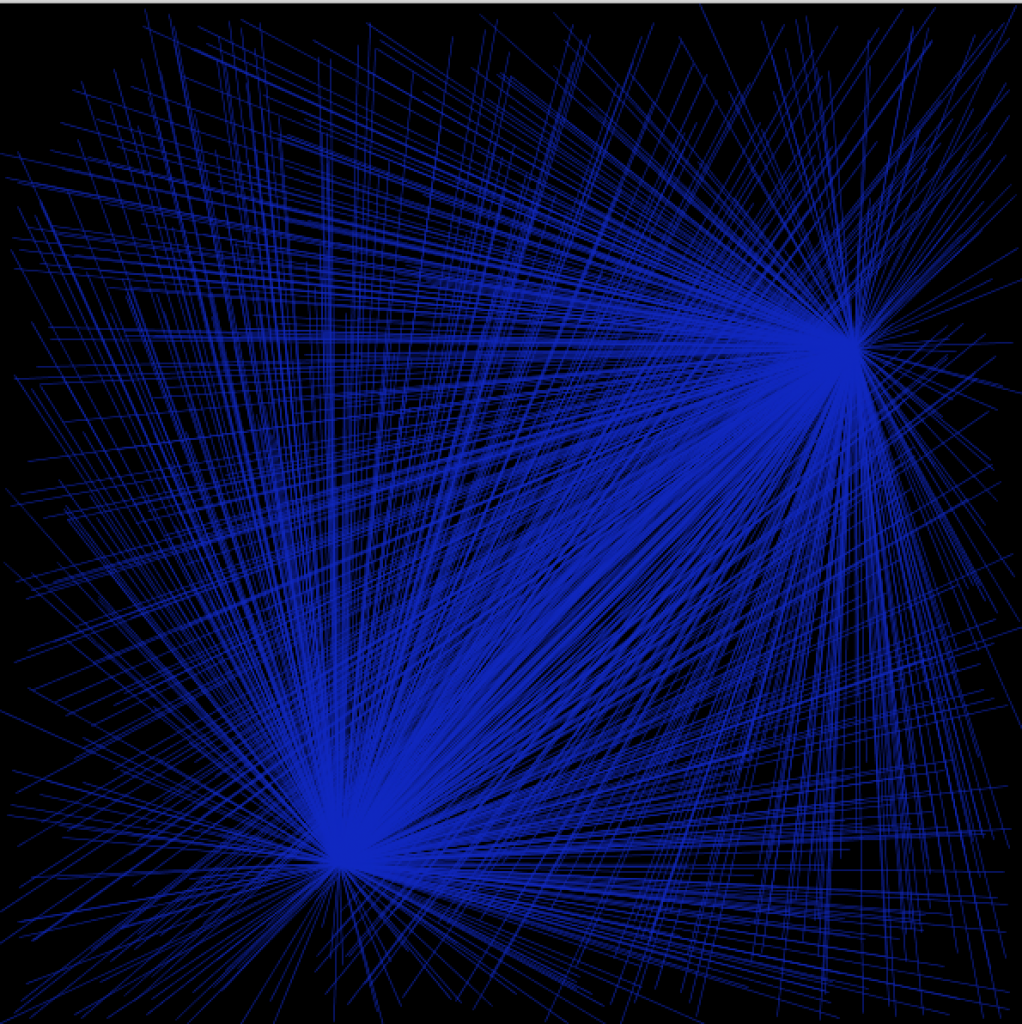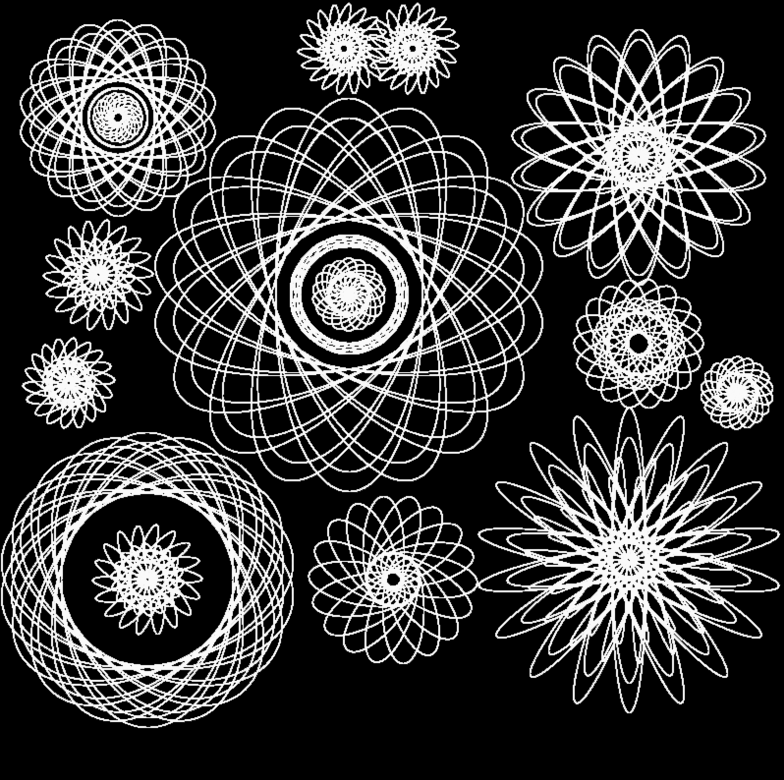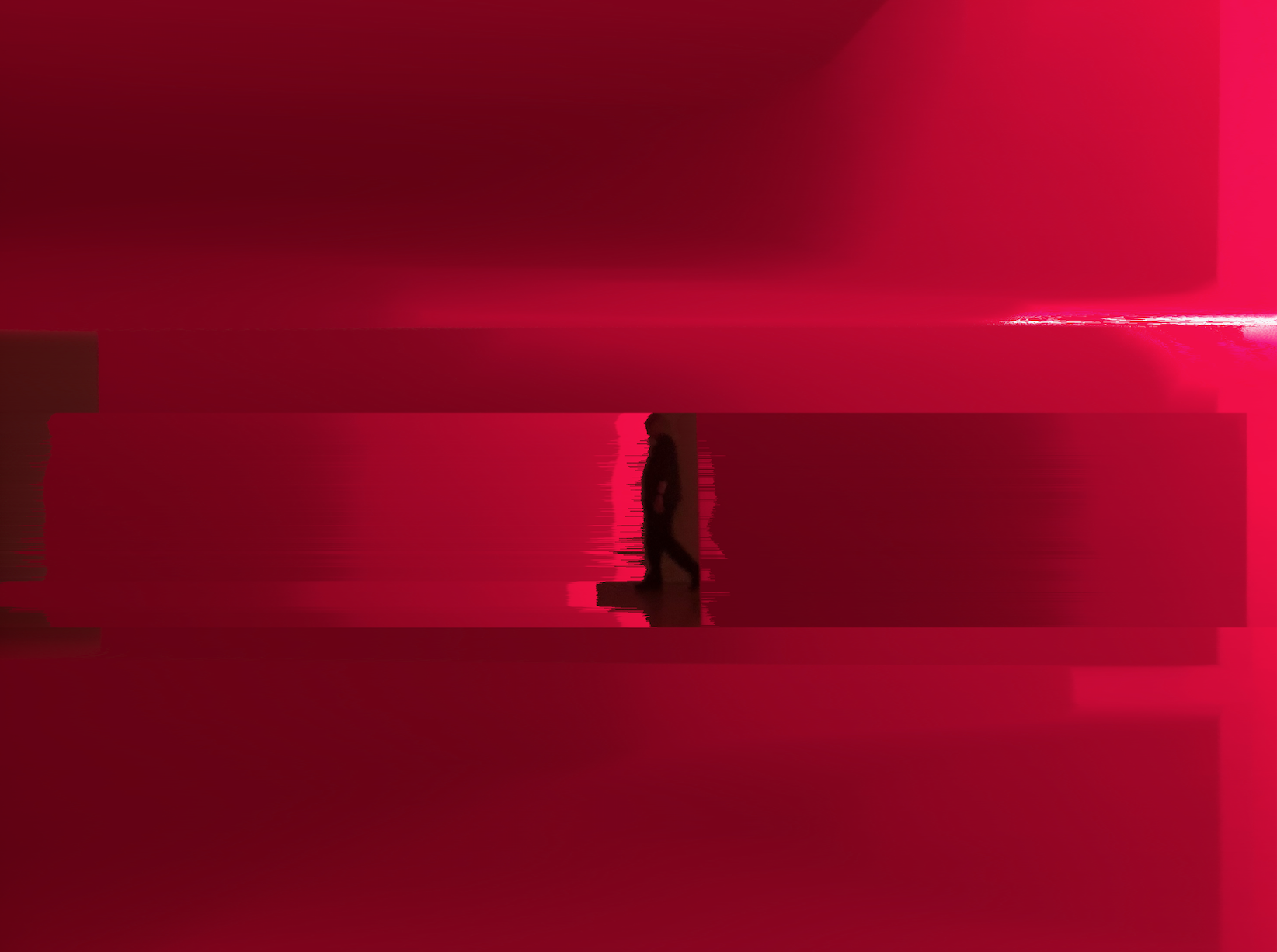Grace Hertlein was an artist who tried to redefine the relationship between geometric figures and nature through the landscape motif. Hertlein’s works look like that she has employed traditional drawing mediums such as paper, pens, and inks, which can produce more biological effects. In other words, Herlein’s works are more like the trend toward mimicry of the hand drawings, which are soft, organic and ‘noisy’.
Taylor describes artists like Hertlein in his book as the following: “Artists deliberately subverted the precision and symmetry of the computer, pushing their practice toward inexactness and disorder” (Taylor, p123). I think what Taylor means here is that he believes these artists tend to work against the accuracy of the computer through inexactness and disorder. For the case of Hertlein, I agree with Taylor that Hertlein embraces much inexactness and disorder in her works, but I do not think Hertlein did that much deliberate subversions to symmetry and precision in some of her works. Instead, I would say Hertlein tried to use distorted algorithms to do the designs, and the images result in having the feeling of energy and tension.
To respond to Hertlein’s works, I created a series of three images. These three images are not describing a specific natural object or landscape, but presenting a broad view of something that I would name it as a ‘universe nest’. I know part of Hertlein’s works are trying to describe a specific natural object or landscape precisely, but what I mostly want to respond to her works here is how she creates soft, organic and ‘noisy’ images and how those images can provide viewers the feeling of energy and tension.
These three images are created based on my first Hertlein ‘check-in’, which was I tried to use noisy lines to present the image of a flower. As I created out the first image of this series of works, I found out that the original pink color I had could not provide me with any feeling of energy or tension based on my new shape. I stared at the changes of my new shape, again and again, trying to know what colors would work here and what I am creating here. For some reasons, I feel like it looks like a part of the universe and it is also shaped like a nest. I tried the combination of black and a blue that I deliberately chose. Surprisingly, it gave me exactly what I was looking for. So, colors do matter a lot in this series of images. For the second one, I changed the shape of ‘rectangle’ to ‘ellipse’ so that we are presented this kind of ‘noisy’ circled lines. The last one are coded in two line functions, which presents us two spots with noisy lines spreading out.
Another thing that I also intentionally tried to respond to was Hertlein’s use of repetition and randomness. Hertlein used repetition and randomness to achieve disorder and inexactness. Repetition and randomness can also be found in my series of images. Lines I created are in a repetitive route, but those repetitive routes did not develop my image in a formal structure. On the opposite, the repetition here helps to create disorder and inexactness. I randomized some elements in each of these images, but took them in control.
My favorite part in creating this series of images is to wait for those repetitive routes creating unexpected shapes without formalism and perfection. Without having exact formalism and perfection shows us that computer can also be ‘humanized’ and can help us to achieve some ‘human hand’ sketches. This can be the reason why Hertlein expected that “given greater space in the mass media”, the audience would eventually widen for computer art. Maybe, imperfection can be another form of perfection.
